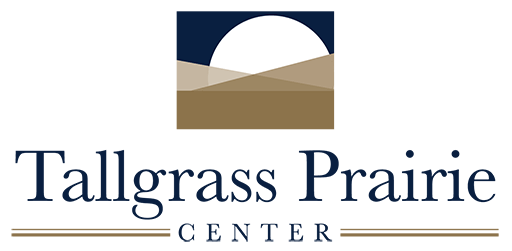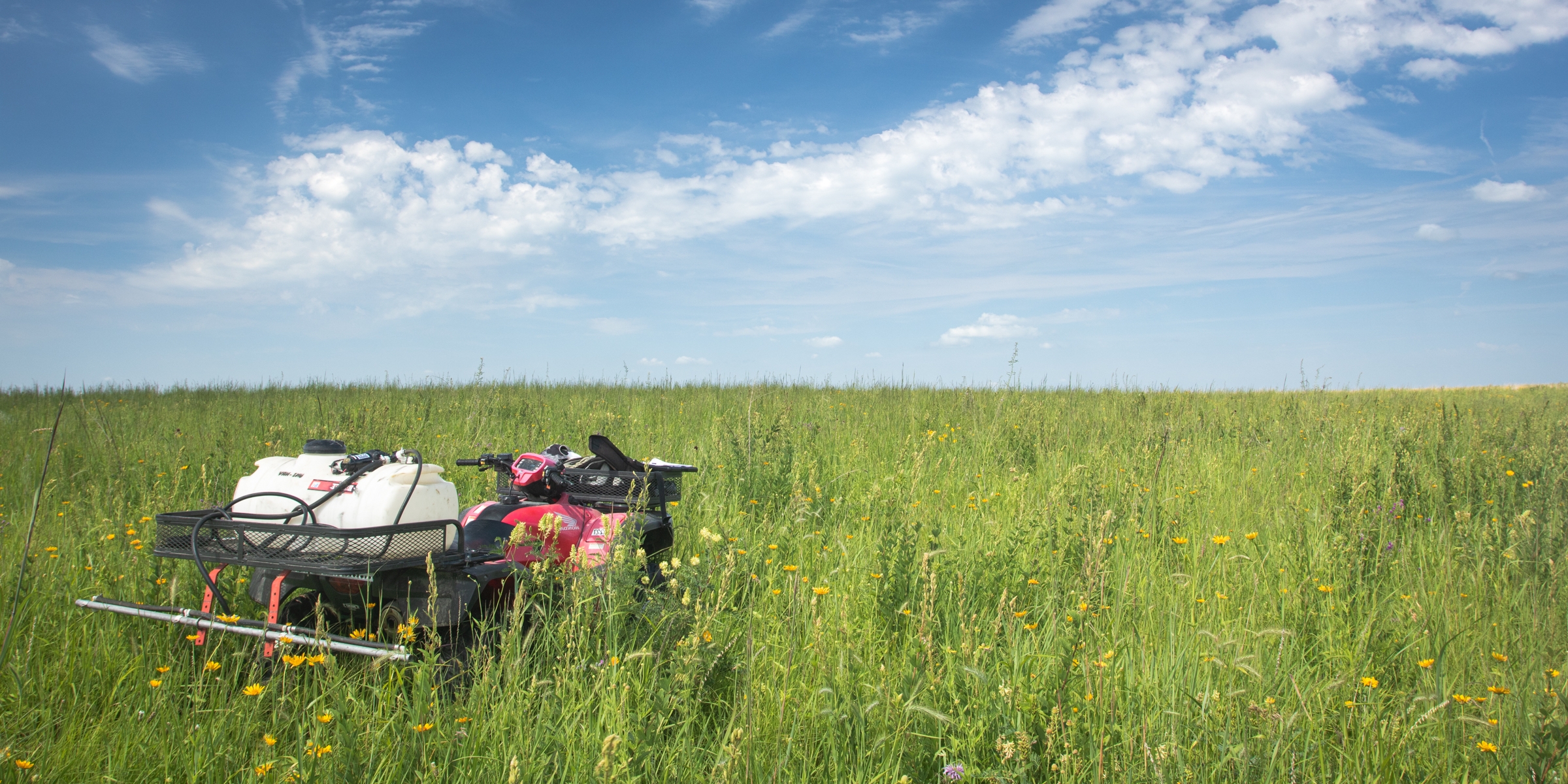Restoration and Land Management
Our vision is to return the tallgrass prairie ecosystem to Irvine Prairie while making and prioritizing land management decisions using state of the art scientific methods and knowledge. We broadly follow the International Principles and Standards for the Practice of Ecological Restoration. Here's how we are using some of those standards to make Irvine Prairie an especially high-quality project:
Engage Stakeholders
We involve members of the Dysart/Traer/LaPorte City communities, neighbors, and researchers in the reconstruction process. Whether it's neighbors donating plant material, area educators and students helping with yearly seeding or transplanting, or local volunteers assisting with prescribed burns, we strive to make the reconstruction process participatory.
Draw on Many Types of Knowledge
We draw on the most recent scientific knowledge related to prairie reconstruction to inform our work, but we also use Local Ecological Knowledge and the experience of practitioner colleagues to make decisions too. Neighbors and farmer cooperators have been especially helpful in understanding the existing soils and hydrology of the site, and have helped us greatly in planning our work.
Informed by Native Reference Ecosystems (While Considering Change)
We use a combination of historical species distribution data (Biota of North America Program) and species composition of the few remnant mesic prairies in eastern Iowa to inform our concept of the Irvine Prairie reference site. In general, we emphasize maximizing diversity as our primary hedge against environmental change. We use as many species as possible in our seed mixes while remaining regionally appropriate. We use regionally available seed sources, many of which use a genetic admixture approach which may be protective in a changing climate.
Support Ecosystem Recovery Processes
The original biota of Irvine Prairie was lost over a century of intensive cropping, and we have very few existing native plants on or near the site from which we could expect any passive ecosystem recovery. Seed banks do not assist prairie restoration efforts after cropping, so we rely on commercially available regional seed sources to reconstruct the tallgrass prairie. However, we have used the few tiny populations of native plants found in the adjacent roadsides as a seed source for our planting efforts. Over time we will help these remnant populations recover by removing the invasive grasses they are currently growing alongside.
Assessed Against Clear Goals Using Measurable Indicators
We developed a set of measurable goals in 2019 that have changed with the size and scope of the project. We used peer-reviewed literature to set goals that balance what we understand is feasible in ecological restoration (assessments of other prairie reconstructions) with what we aspire to achieve (ecosystem measures of similar prairie remnants). With project expansion in 2023, we are working with experts in the field to update our goals to better reflect what may be newly achievable. View our goals for prairie reconstruction here.
Seek the Highest Level of Ecosystem Recovery Possible
We made sure to plan far into the future as we developed our restoration plan, and built in the capacity for long-term monitoring and management at Irvine Prairie. This resource stability and long-term thinking will allow us to build on our goals and constantly improve our outcomes over ecologically relevant timescales.
Irvine Prairie is being restored back to tallgrass prairie in phases. Rather than seed the entirety of the land at once, the Tallgrass Prairie Center restores smaller areas each year, learning more about what seeding and site preparation techniques work best. By monitoring vegetation and restoring 25 to 35 acres over ten years, Tallgrass Prairie Center staff can adapt to be more effective over time at Irvine Prairie and beyond. Visitors can walk through different planting areas to see how a prairie reconstruction develops over time, experiencing the weedy first year and the mature stand with lots of conservative prairie plants in the same area. The first planting area at Irvine Prairie was seeded in 2018, on the hilltop to the south. The final planting area will be seeded in the far northeast corner in 2028. Use the map below to learn more about what's getting restored when.
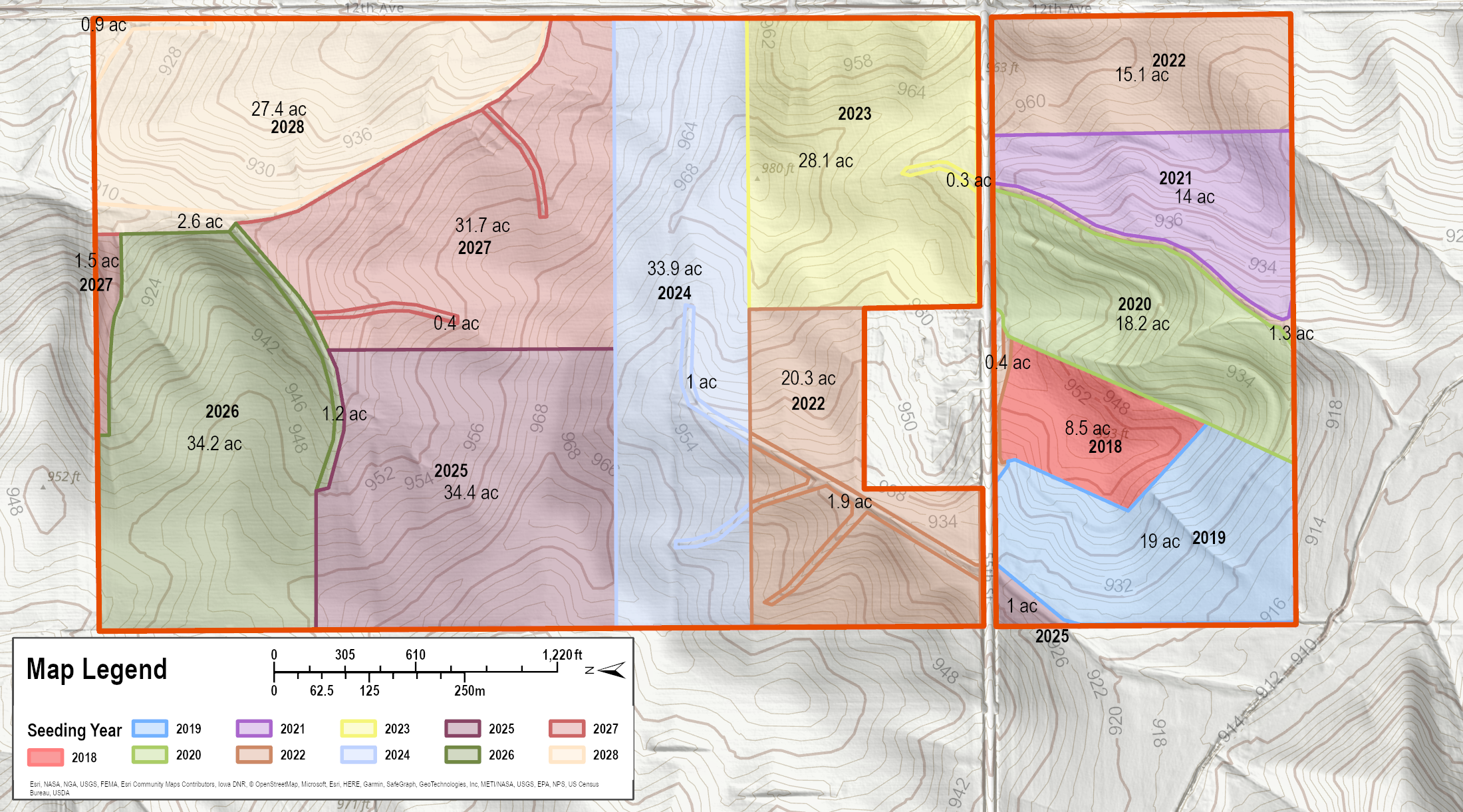

Science and Outreach Reports
Each year we publish a report based on the year's activities and ecological monitoring data. View the most recent and archived reports below.
2025 Reports
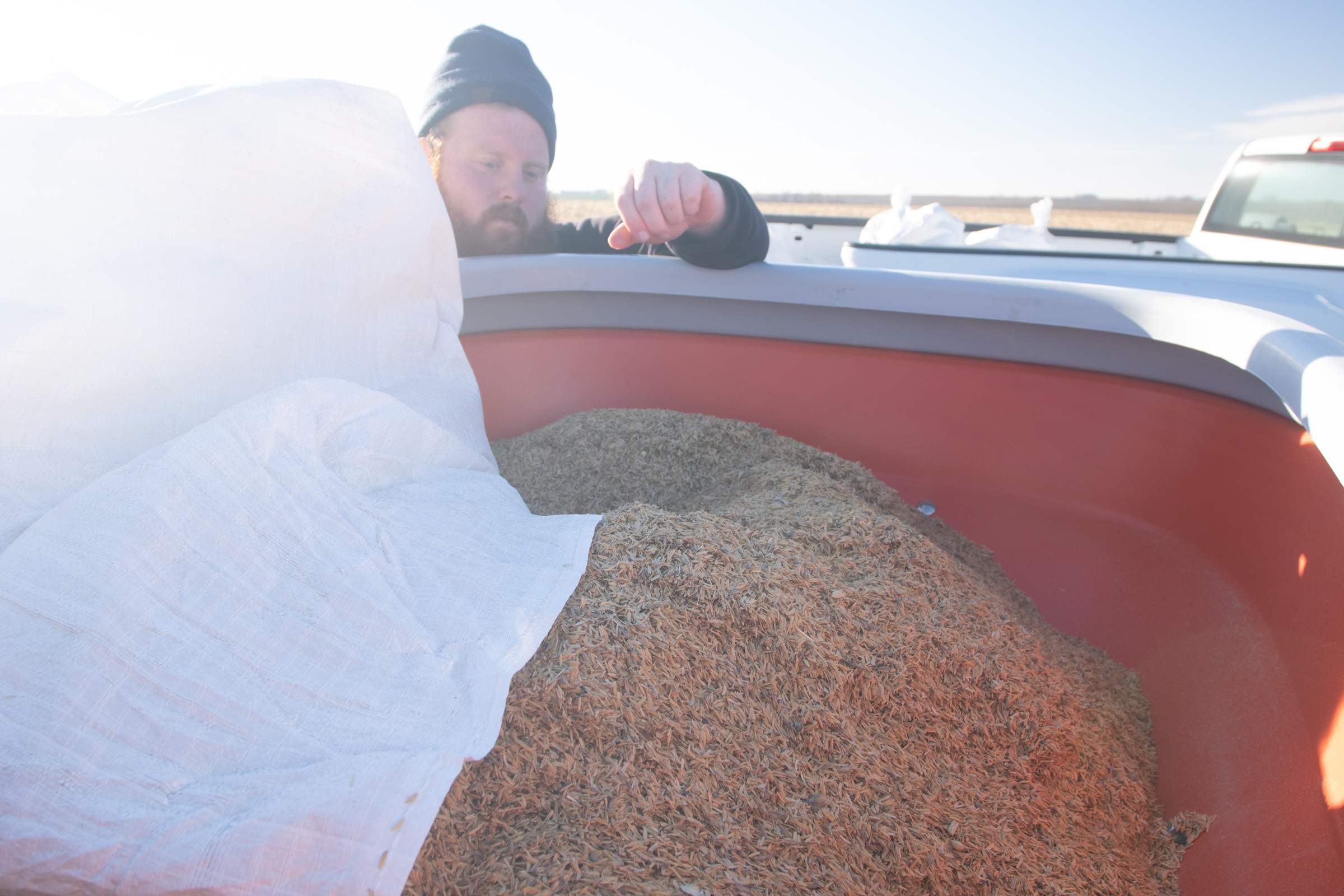
Seeding
We seed 100–130 species of plants native to eastern Iowa each year, primarily using commercial seed. We prioritize sowing the most species possible, using the most appropriate genetic sources we can find.
2024 Highlights
- 123 Species
- 34.9 Acres
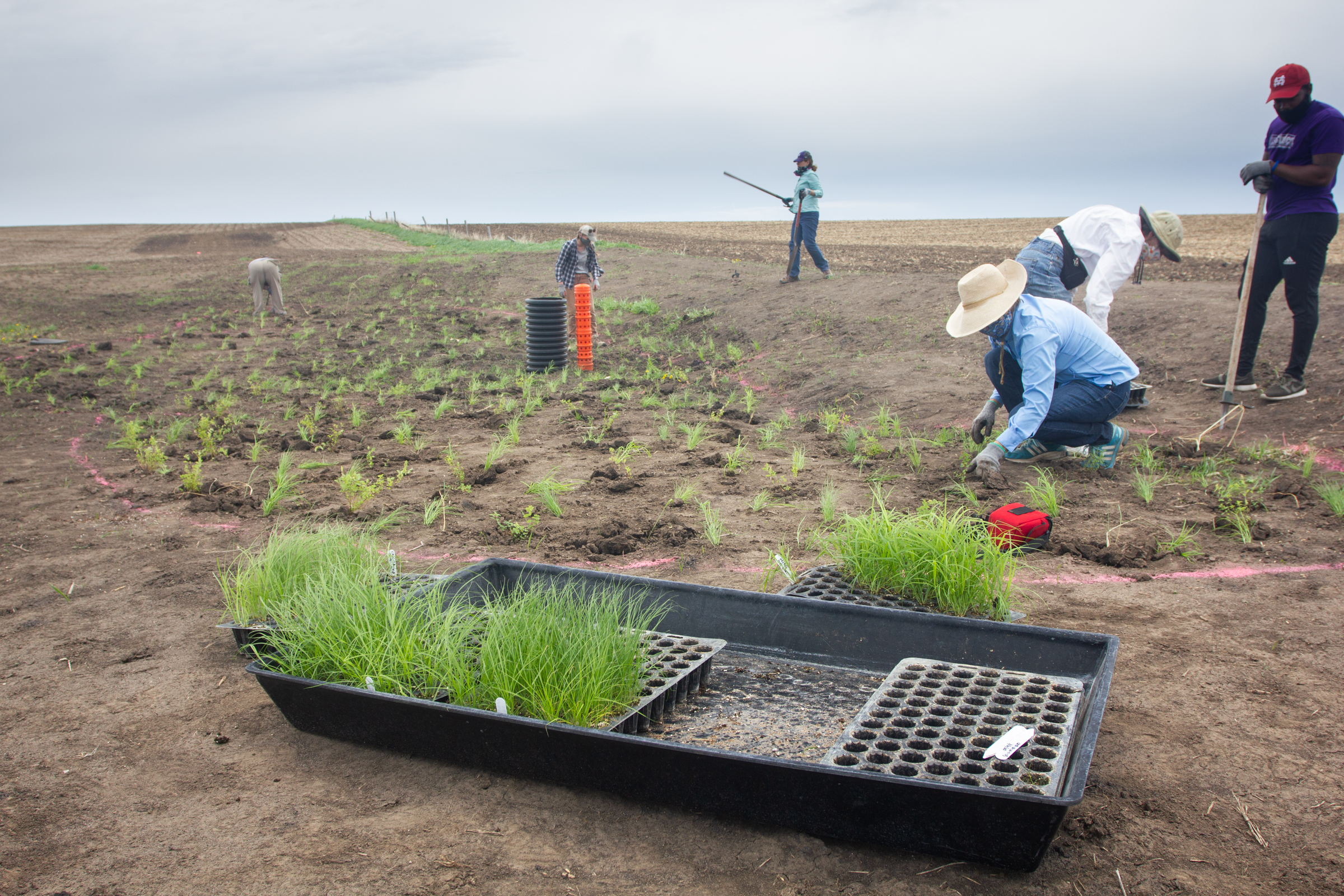
Transplanting
We grow transplants to plant in Irvine Prairie for difficult to establish plants species, or if important plant species are not commercially available as seeds.
2024 Highlights
- 15 species
- 1756 plants

Prescribed Fire
Prescribed fire is essential for maintaining the ecological integrity of tallgrass prairies. Find our recent and archived burn plans below.
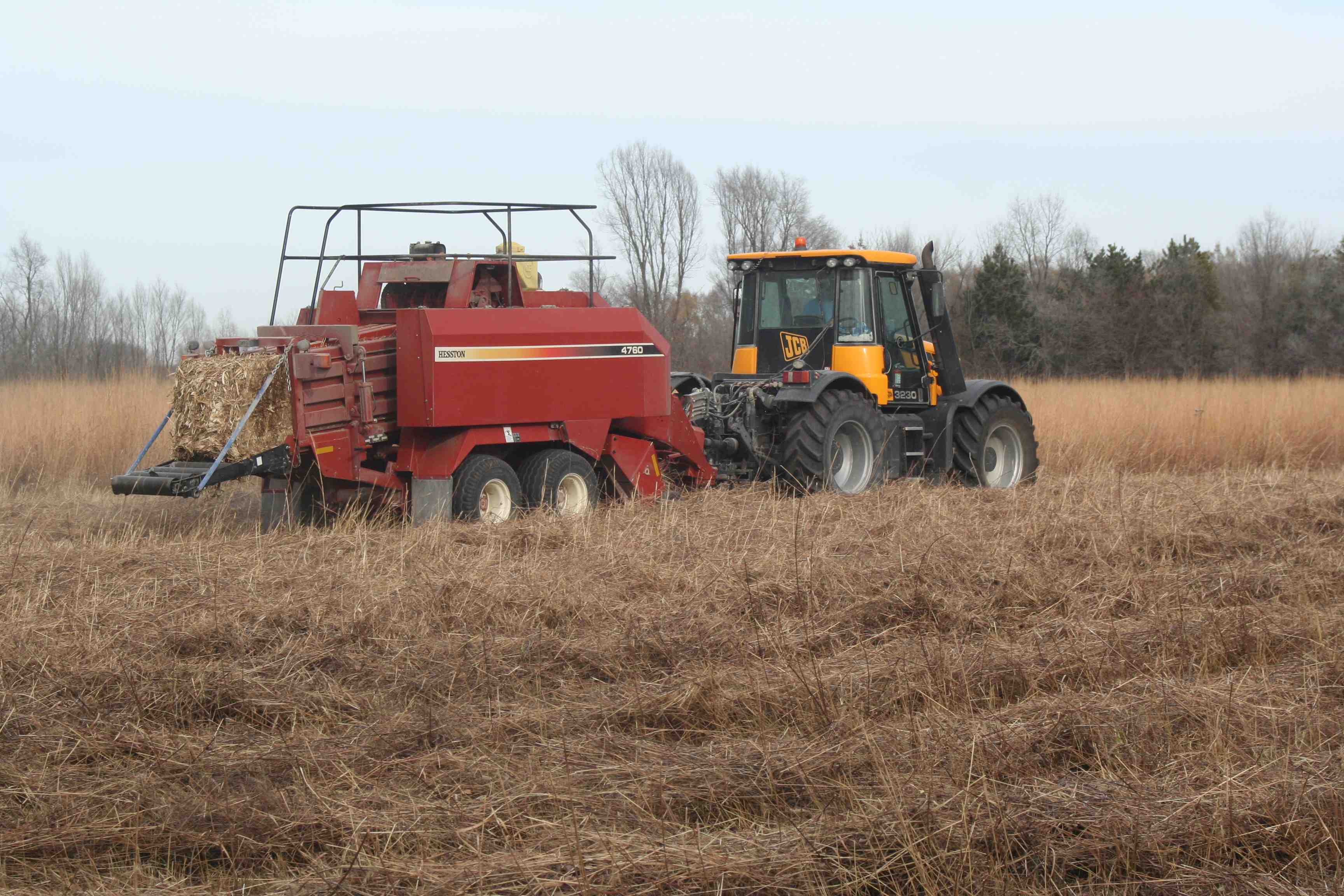
Conservation Haying
We use conservation haying in addition to prescribed fire to maintain a healthy prairie. Contact us if you would like to become a conservation haymaker at Irvine Prairie.
A map of hay units will be available soon.
Contact Us \ Learn More
For questions or more information about restoration and land management at Irvine Prairie, please contact:

